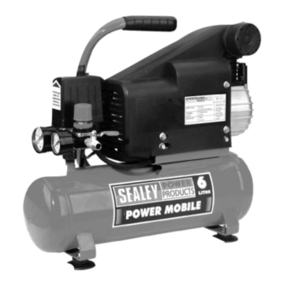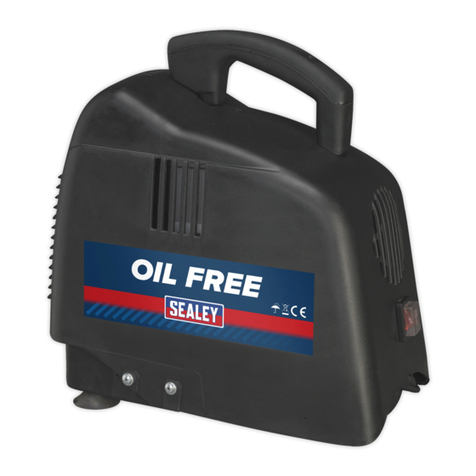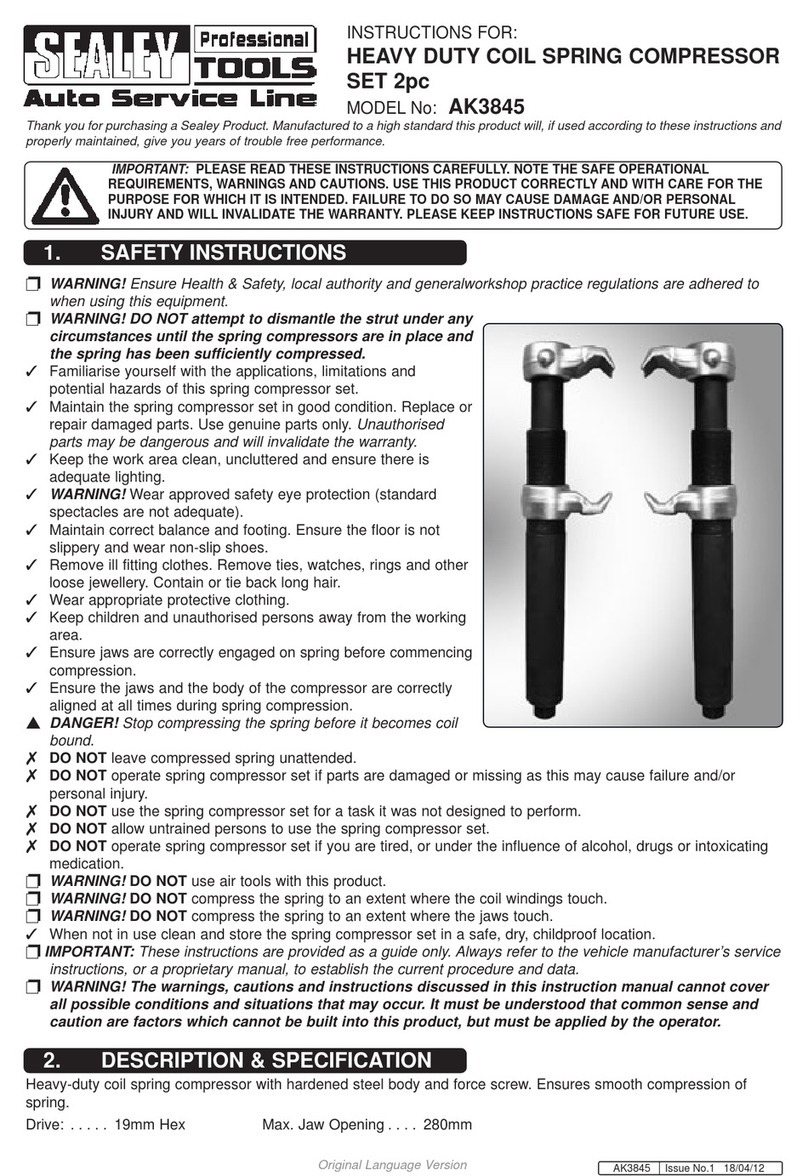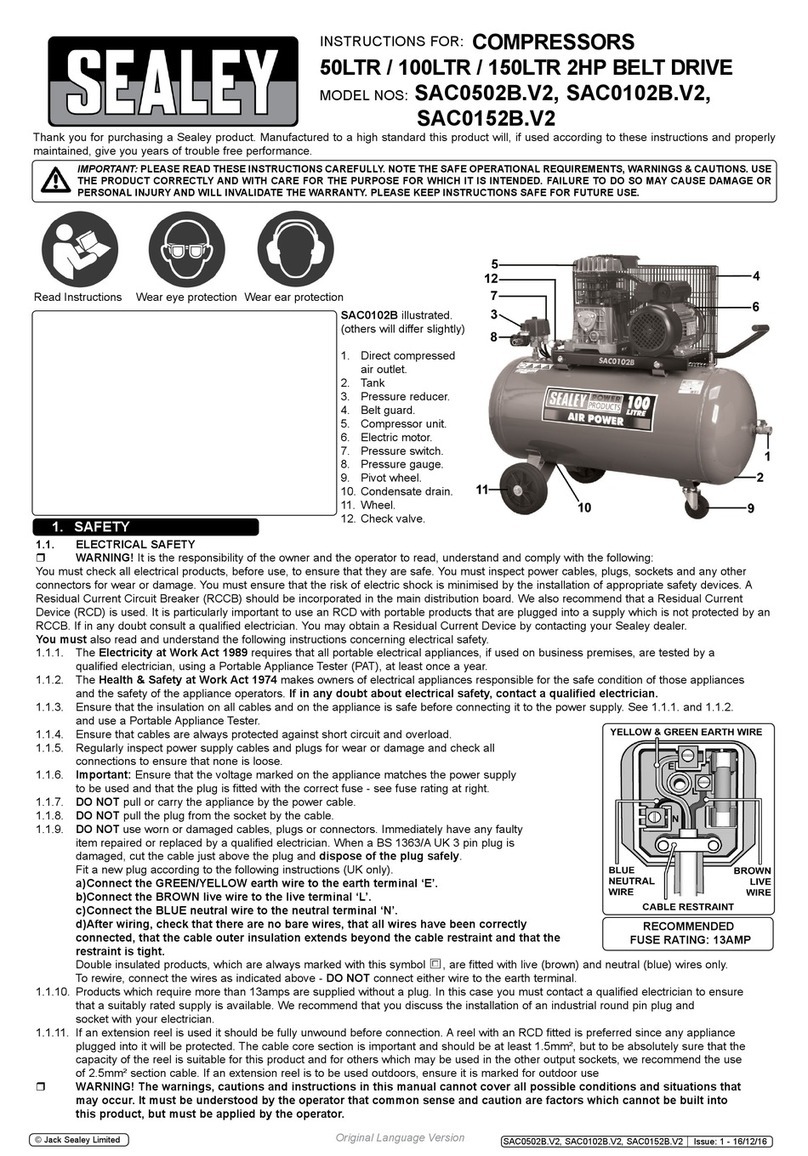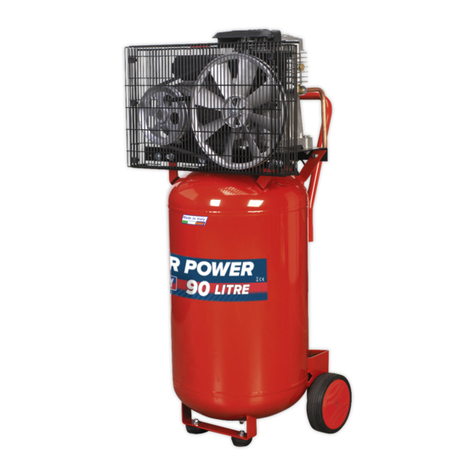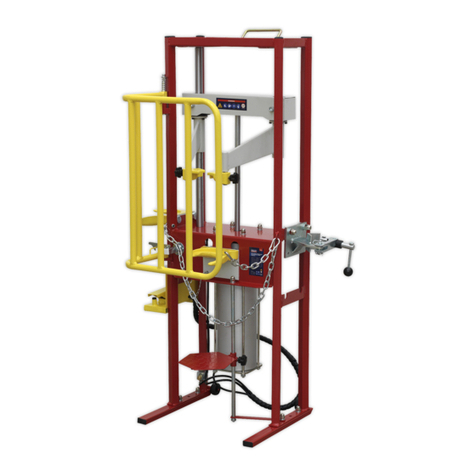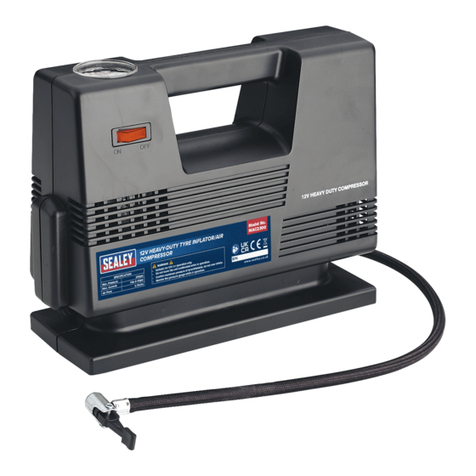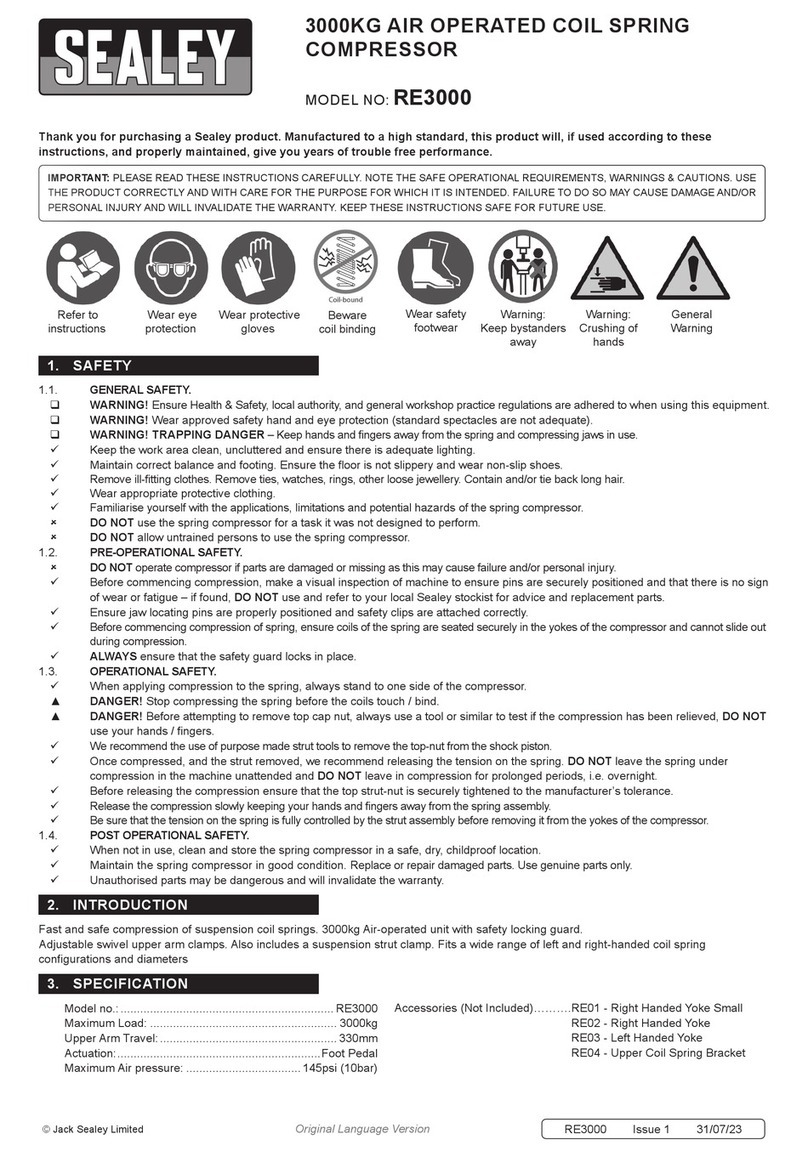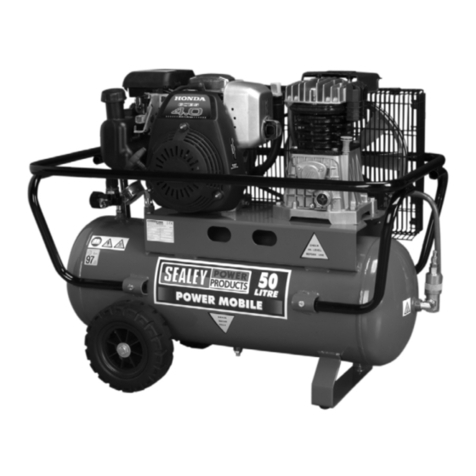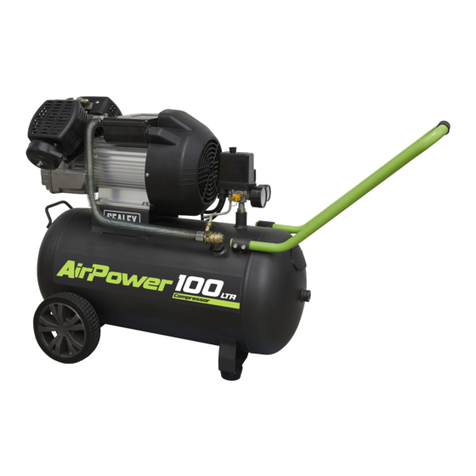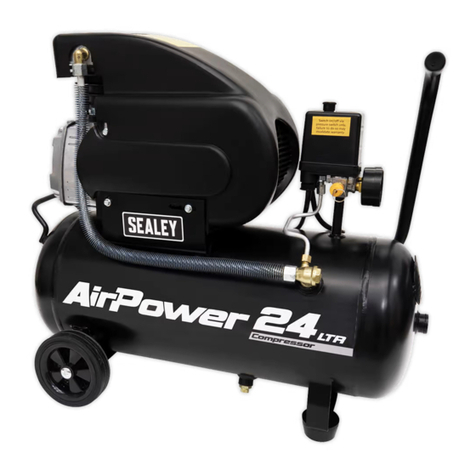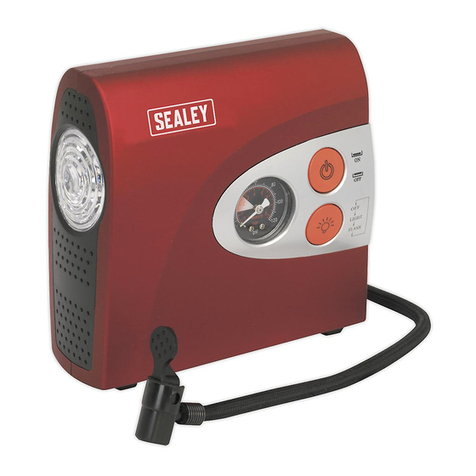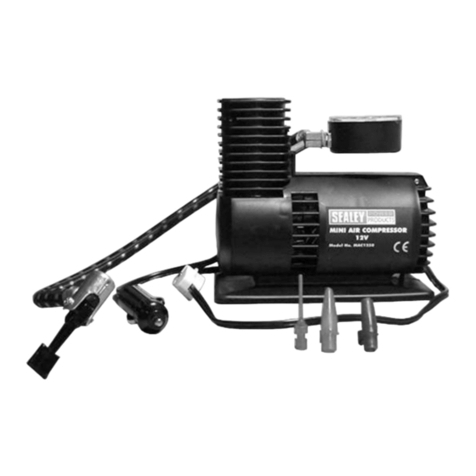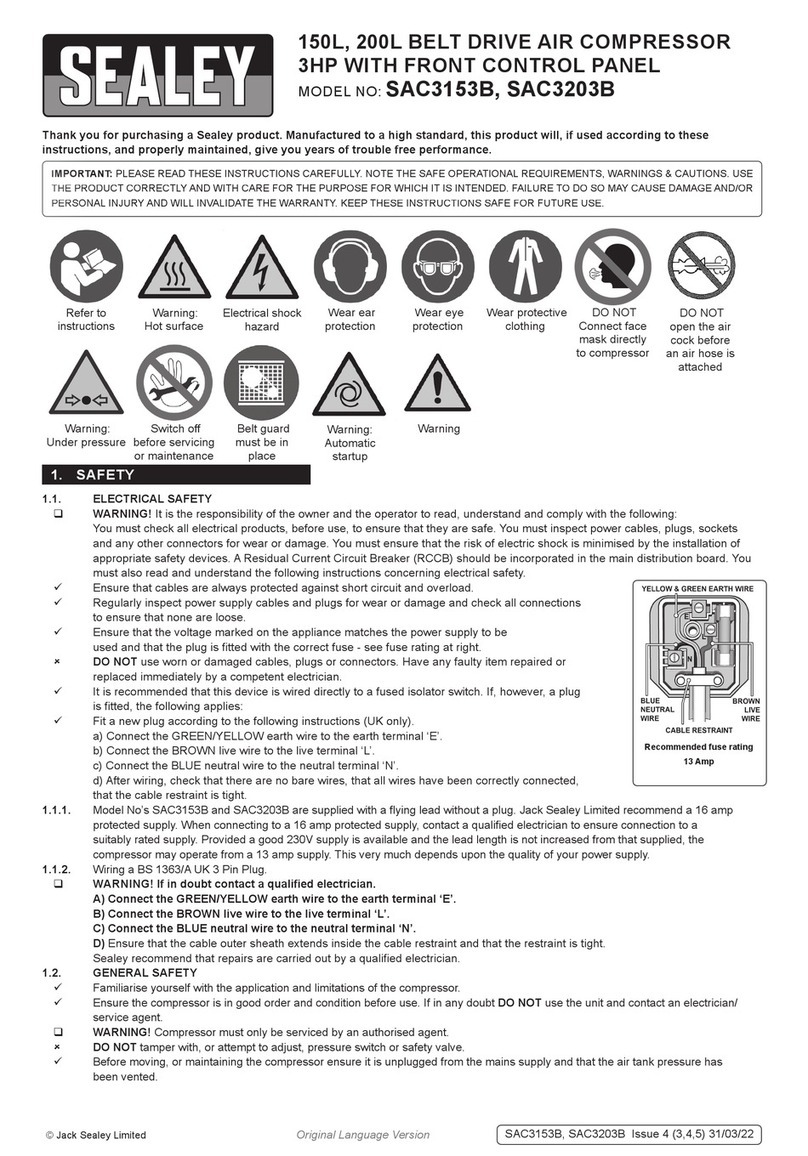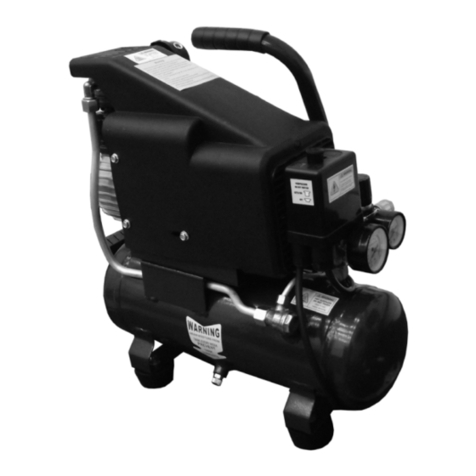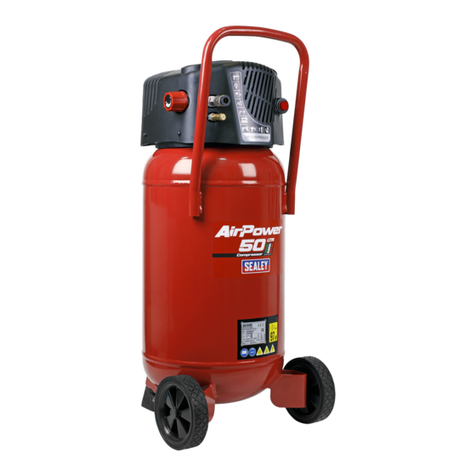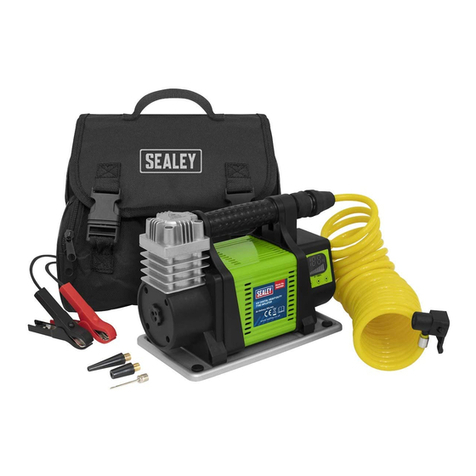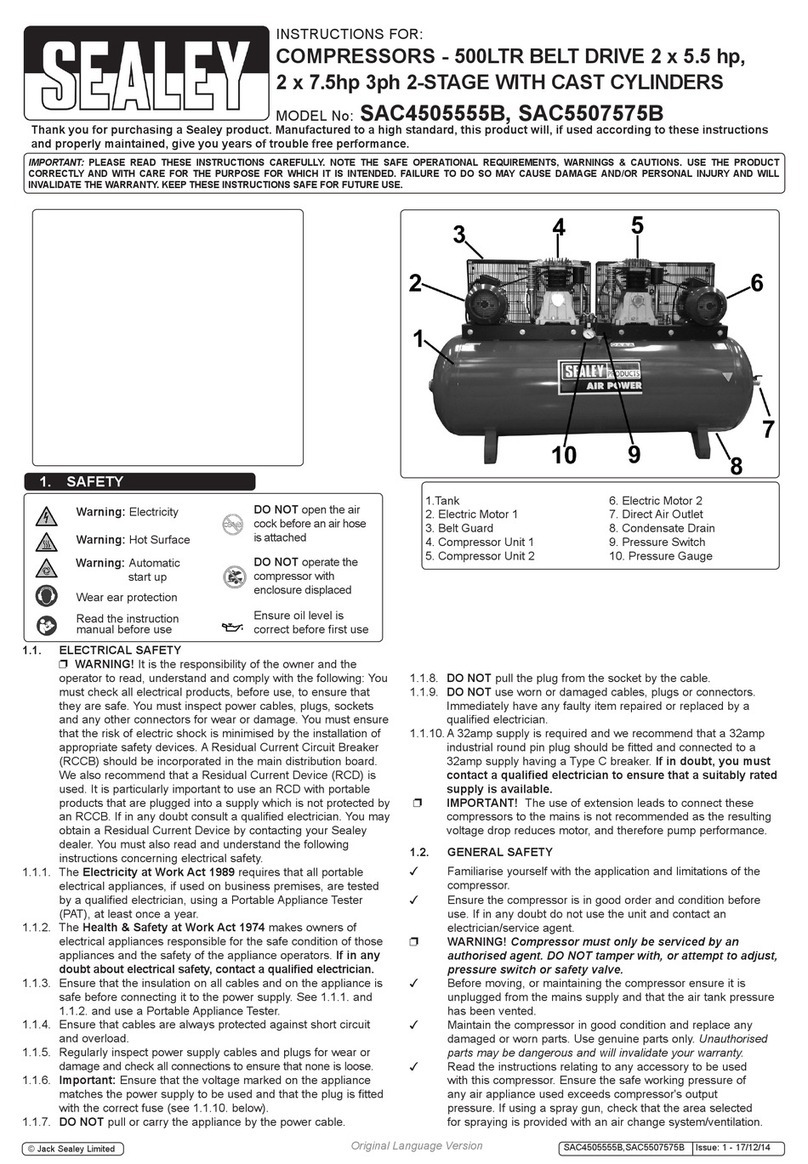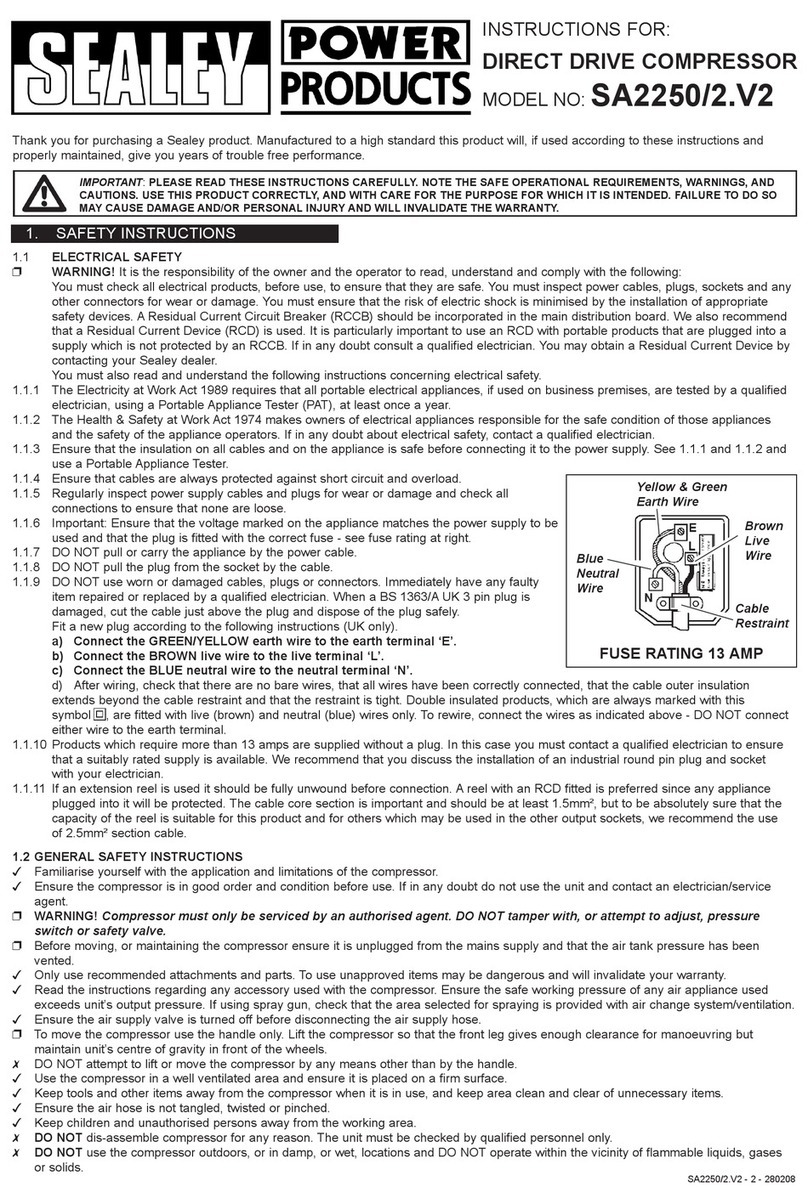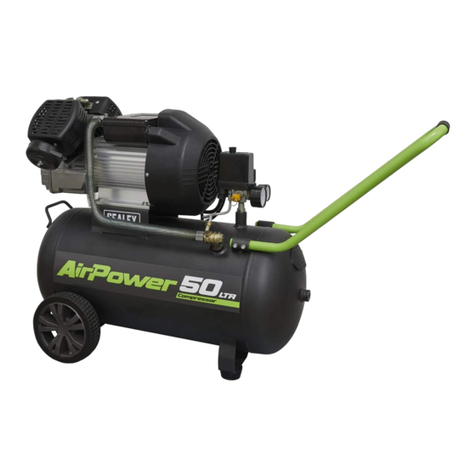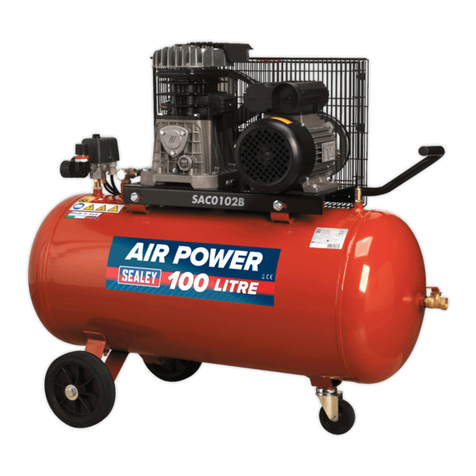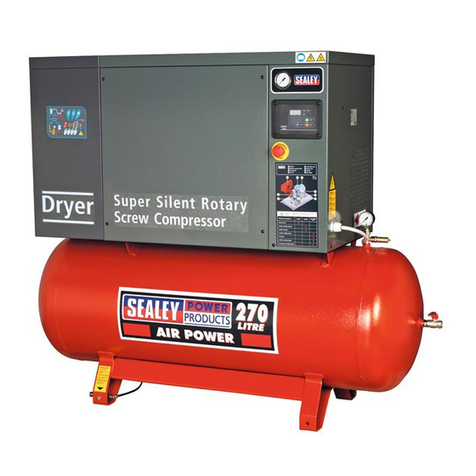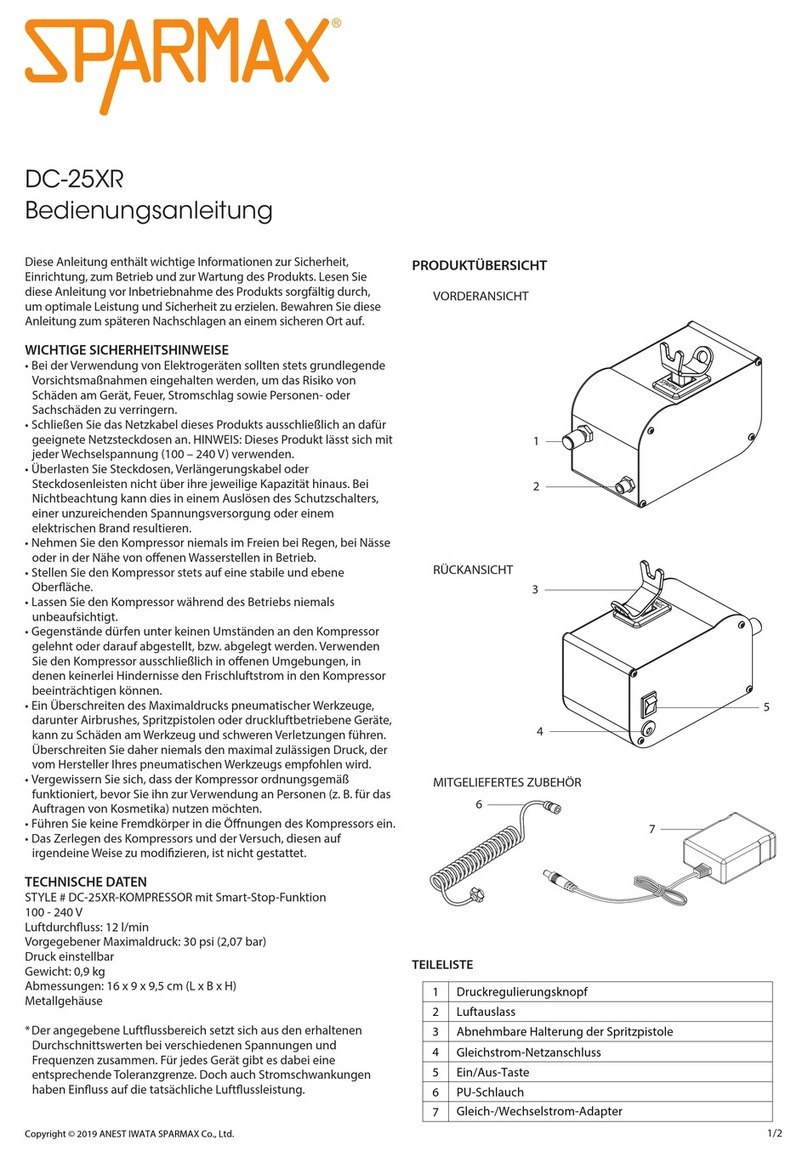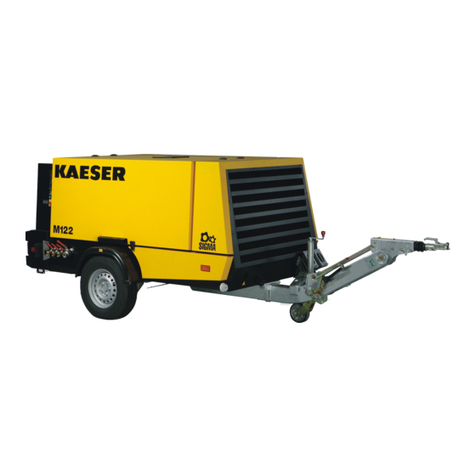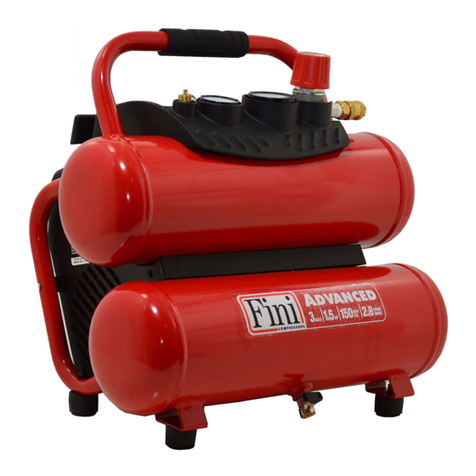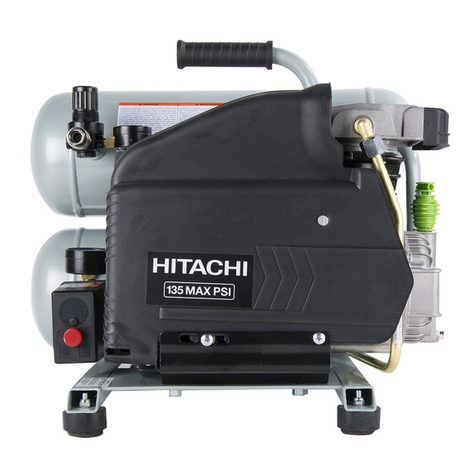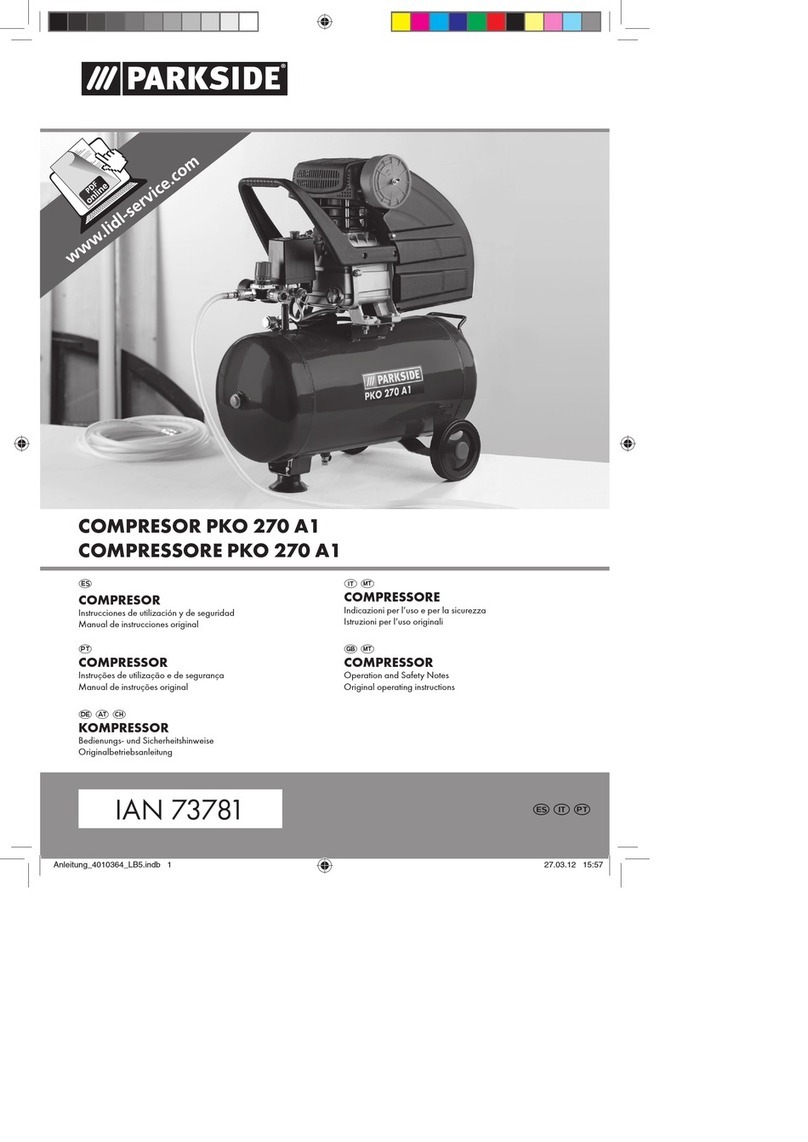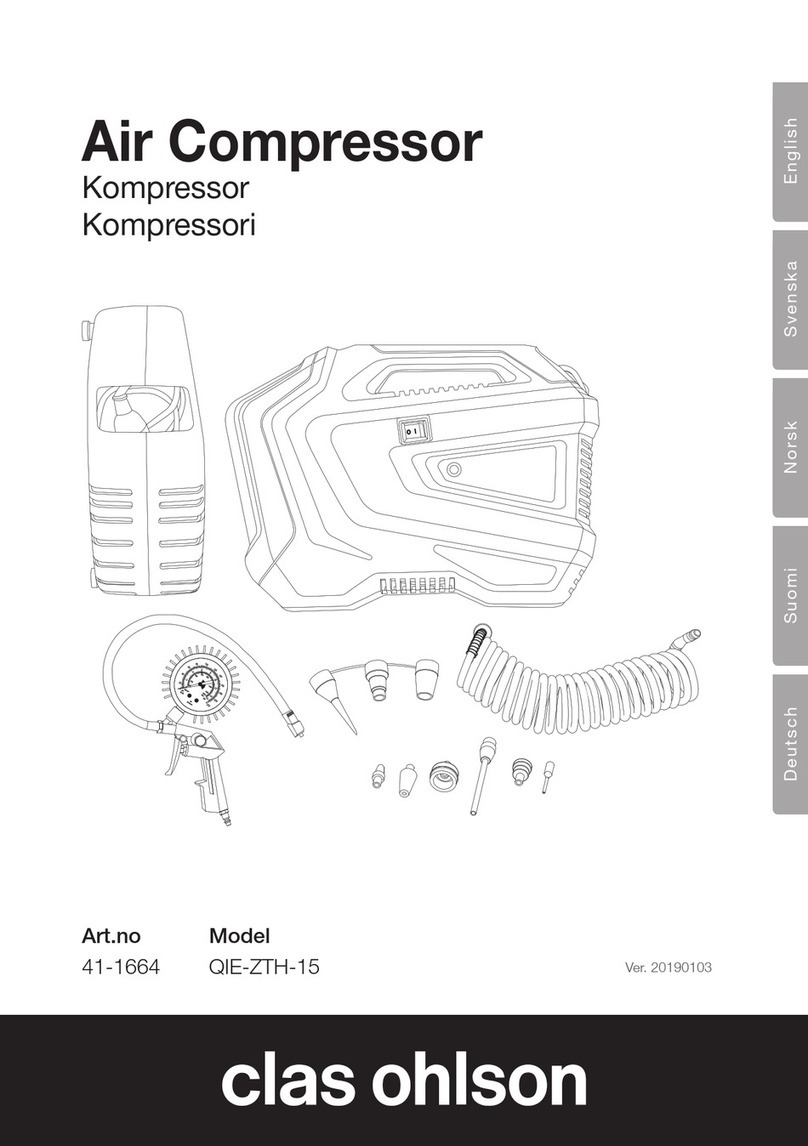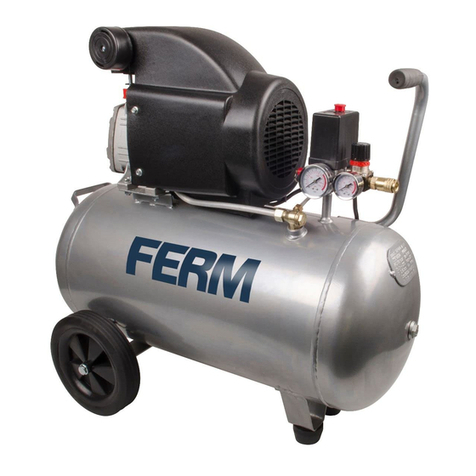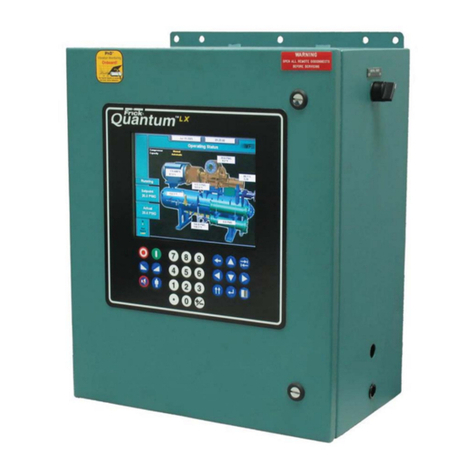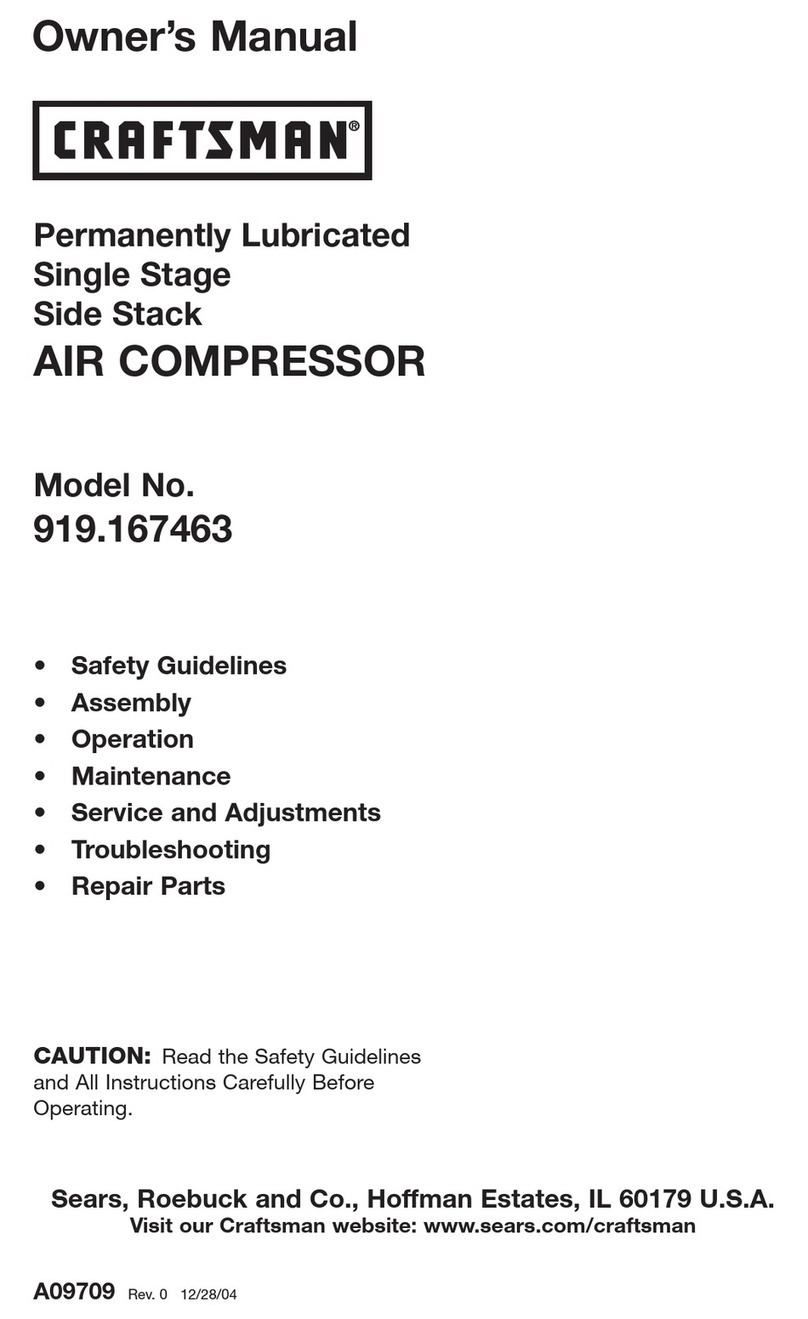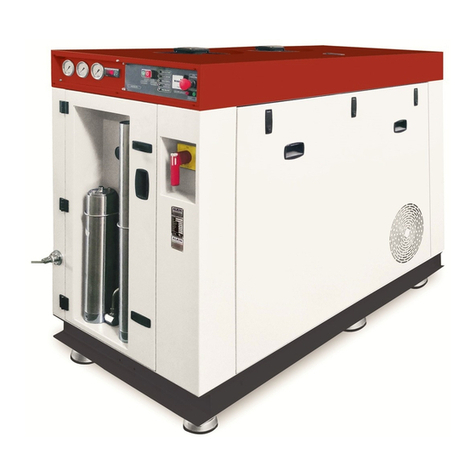
9Before moving, or maintaining the compressor ensure it is unplugged from the mains supply and that the air tank pressure has been
vented.
9Maintain the compressor in good condition and replace any damaged or worn parts. Use genuine parts only. Unauthorised parts may be
dangerous and will invalidate your warranty.
9Read the instructions relating to any accessory to be used with this compressor. Ensure the safe working pressure of any air appliance
used exceeds compressors output pressure. If using a spray gun, check that the area selected for spraying is provided with an air change
system/ventilation.
9Ensure the air supply valve is turned off before disconnecting the air supply hose.
9To move a transportable compressor use the handle only. Lift the compressor so that the front leg gives enough clearance for
manoeuvring but maintain unit’s centre of gravity in front of the wheels. DO NOT attempt to lift or move the compressor by any other
means.
9Use the compressor in a well ventilated area and ensure it is placed on a firm surface.
9Keep tools and other items away from the compressor when it is in use, and keep area clean and clear of unnecessary items.
9Ensure the air hose is not tangled, twisted or pinched.
9Keep children and unauthorised persons away from the working area.
9Only move the compressor by the handle if portable.
8DO NOT dis-assemble compressor for any reason. The unit must be checked by qualified personnel only.
8DO NOT use the compressor outdoors, or in damp, or wet, locations.
8DO NOT operate within the vicinity of flammable liquids, gases or solids.
8DO NOT touch compressor cylinder, cylinder head or pipe from head to tank as these may be hot.
8DO NOT use this product to perform a task for which it has not been designed.
8DO NOT deface the certification plate attached to the compressor tank.
8DO NOT cover the compressor or restrict air flow around the unit whilst operating.
▲DANGER! DO NOT direct the output jet of air towards people or animals.
8DO NOT operate the compressor without an air filter.
8DO NOT allow anyone to operate the compressor unless they have received full instructions.
WARNING! The air tank is a pressure vessel and the following safety measures apply:
8DO NOT tamper with the safety valve, DO NOT modify or alter the tank in any way and DO NOT strap or weld anything to the tank.
8DO NOT subject the tank to impact, vibration or to heat and DO NOT allow contact with abrasives or corrosives.
9Drain condensation from tank daily and inspect inside walls for corrosion every three months and have a detailed tank inspection carried
out annually. The tank shell must not fall below the certified thickness at any point.
WARNING! If an electrical fuse blows, ensure it is replaced with an identical fuse type and rating.
9When not in use, store the compressor carefully in a safe, dry, childproof location.
9When the compressor is not in use it should be switched off, disconnected from the mains supply and the air drained from the tank.
8DO NOT carry out any welding operations on any pressurised parts of the vessel.
1.3. INSPECTION OF PRESSURE TANK BOTH INTERNAL AND EXTERNAL
1.3.1. Under the Pressure Systems Safety Regulations 2000 it is the responsibility of the owner of the compressor to initiate
asystemofinspectionthatbothdenesthefrequencyoftheinspectionandappointsapersonwhohasspecicresponsibilityfor
carrying out the inspection.
IMPORTANT WARNING-Aircontaminantstakenintothecompressorwillaectoptimumperformance.Example:Bodyllerdustorpaint
overspraywillclogthepumpintakelterandmaycauseinternaldamagetopump/motorcomponents.Pleasenotethatanypartsdam
aged by any type of contamination will not be covered by warranty.
2. INTRODUCTION
Heavy-duty low noise compressor suitable for garage, bodyshop and industrial applications. Fitted with cast iron cylinder head enabling
slower revving and improved pump life. Fully enclosed, insulated design gives quiet running at just 68dB(A) (at 1mtr) and protects vital
components from damage. Features fully automatic pressure cut out switch and tank pressure gauge. Heavy-duty single phase electric
motor with soft start feature. Control box features tachometer for monitoring use and optimizing service times. Supplied with full CE
certification, test certificate, operating/maintenance manual.
3. i SPECIFICATION
SAC2203BLN.V2 Issue 2 (H, 3, F) 09/07/18
Original Language Version
© Jack Sealey Limited
Model SAC2203BLN.V2
Motor Output 3hp
Supply Voltage 230V
Phase 1ph
Minimum Rated Supply 16A
Speed 1075rpm
Air displacement cfm(ltr/m) 15/425
Noise Level 68dB(A)
Max Free Air Displacement cfm(ltr/m) 10.9/309
Max Pressure 145/10psi(10bar)
Receiver Capacity 200ltr
Outlet 1/2”BSP Female Tap
Dimensions (WxDxH) 1440x440x1210mm
Weight 175kg
